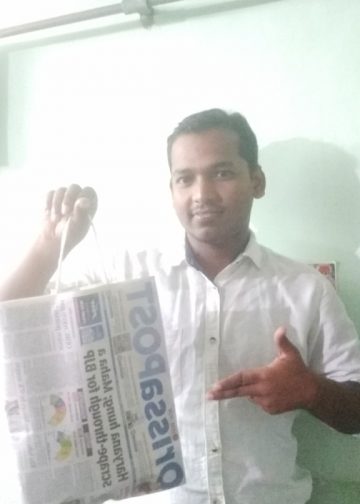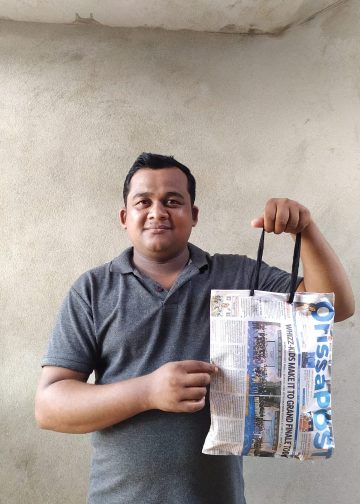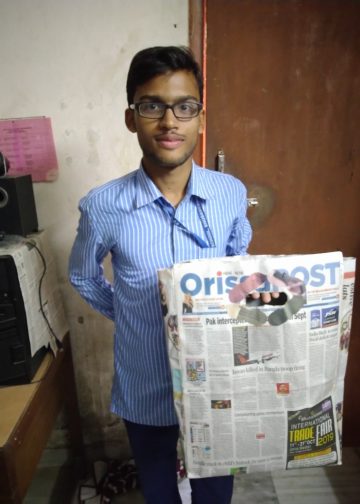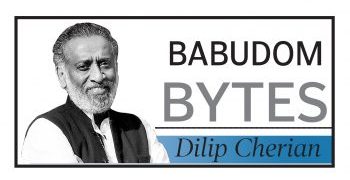Pragatiprava
Weather modification entails the application of different scientific techniques to bring about unusual changes in weather patterns and the environment. To deal with critical ecological issues like pollution, weather modification mechanisms have been applied in various parts of the globe in the not-too-distant past. However, the Delhi government’s proposal of creating artificial rain over a selected landmass to combat the ever-growing menace of air pollution and lifting the dark blanket of smog that wraps the national capital is, by all means, a short-sighted approach to tackling the menace. Experts apprehend that tinkering with the processes of nature in such irrational ways could also result in deadly acid rain...
 Modern man doesn’t believe that the rain god Lord Indra’s blessings are required for a bountiful harvest, contrary to what the Vedas suggest. Humankind has taken it upon itself the task of creating artificial rain over a specific and selected landmass to make it bio-habitable – a process known as cloud seeding. With pollution posing a global challenge, the national capital has been in the news for the last many days for all the wrong reasons. Delhi has witnessed an exponential rise in air pollution in the last few decades and the present dispensation’s fire-fighting measures, especially the proposed move to induce rainfall through cloud seeding to tackle the smog that has engulfed the city since
Modern man doesn’t believe that the rain god Lord Indra’s blessings are required for a bountiful harvest, contrary to what the Vedas suggest. Humankind has taken it upon itself the task of creating artificial rain over a specific and selected landmass to make it bio-habitable – a process known as cloud seeding. With pollution posing a global challenge, the national capital has been in the news for the last many days for all the wrong reasons. Delhi has witnessed an exponential rise in air pollution in the last few decades and the present dispensation’s fire-fighting measures, especially the proposed move to induce rainfall through cloud seeding to tackle the smog that has engulfed the city since
Diwali, are steps towards a dead end.
Sunday POST speaks with scientists and experts on cloud seeding as a means of tackling pollution, all of whom are averse to the idea of weather modification as it goes against the laws of nature.
Explaining the term ‘cloud seeding’ Dinabandhu Sahoo, director of the Institute of Bioresources and Sustainable Development, department of biotechnology, ministry of science and technology, said: “Cloud seeding is local area weather modification to create rainfall. It is done by injecting chemicals such as silver iodide or solid carbon dioxide (dry ice) into the atmosphere to induce moisture in the clouds so as to cause rainfall. The process is executed by an aircraft. Artillery guns can also be used to inject rain-inducing chemicals into the cloud cover.
The concept of cloud seeding is not new to India. The country has used the method many times in the past to combat drought in Tamil Nadu, Karnataka and Maharashtra. But if the technology of weather modification is used in Delhi it will be the first-ever use of it to reduce pollution, pointed out Sahoo, who is also professor at the department of botany, University of Delhi.
Elaborating on the growing pollution level in Delhi, Sahoo, a member of the Society for Indian Ocean Studies, said air pollution in the national capital is mainly caused by smog – a combination of smoke and fog. Unregulated construction activities and plying of numerous vehicles are the reasons behind the soaring level of pollution in the city. Unregulated construction activities add to the aerosol level in the atmosphere, while vehicular emissions release toxic gases.
Environmental economist Ashok Kumar Singha, managing director of CTRAN Consulting, a firm that works for sustainable growth in the fields of energy, environment and climate change, supported the Delhi government that attributes the smog to the mass burning of crop stubbles in the neighbouring states of Punjab and Haryana.
Pranab Kumar Choudhury, a well known environment consultant in Orissa, credited the geographical location of the national capital to be the reason behind heavy pollution. He said most often, movements of winds trap air in Delhi. In hot weather conditions, the air moves upwards and thus dust and other pollutants get carried out of the city. But as temperature drops during winter, the unmoving air does not let the pollutants to flush out.
The high pressure, characteristic of cold weather, forms aerosol in the atmosphere and the residents have no options other than breathing the hazardous pollutants. In simple words, trapped air brings pollutants from neighbouring areas but does not take them away when temperature is low, which can be termed as advection.
Choudhury, the vice-president of the Natural Resource Management Consultant, further added that being a land-locked region, there is very little scope for Delhi to flush out the polluted air or replace it with unpolluted or less polluted air mass. The pollution level even soars to an extreme following uncontrollable bursting of crackers during Diwali celebrations.
How rain reduces pollution
The Delhi government plans to induce artificial rain as a way to cleanse the atmosphere as rain can wash out pollutants including dust particles from the air. Rain helps by making dust particles stick to the ground. It also prevents the particles that have already settled on the ground to get dispersed into the atmosphere again. Thus their concentration gets reduced in atmosphere leading to reduction in air pollution levels, says Singha.
Studies point out a raindrop attracts hundreds of tiny aerosol particles to its surface during its way down. The process, called coagulation, can clear the pollutants.
According to Singha, “This is the reason, the air quality remains at safe levels during monsoon and soars up during winter when there is little rain or very less moisture in the atmosphere. High smog occurs during the winter months.”
Is cloud seeding a safe practice?
Choudhury said any kind of manipulation with the laws of nature yields adverse consequences. It is better to avoid weather modification as it is against the processes of nature. Unless there is an emergency, it is better not to interfere with nature.
The second danger in applying the technique is that we will become dependent on short-cut techniques to get temporary relief from pollution and, in the process, lose our focus on bringing out a permanent solution to the problem, added Choudhury.
He further pointed out that “Artificial rainfall involves releasing chemical substances to encourage the formation of raindrops. These hazardous chemicals, when they fall on earth along with raindrops, pollute the soil and water.”
“Such substances could cause dangerous heavy-metal pollution and would provide only temporary relief for air pollution problems,” he added.
Experts opine that despite the momentary curative effects, the chemicals which induce rain have negative side effects. While their negative effects are yet to be established, they pose threats to the purifying capacities of soil and water.
Choudhury further raised the concern that in the present climatic condition of Delhi when there is very little moisture in the atmosphere, cloud seeding may result in a drizzle and thus the amount of pollutants in the rainwater will be high. So the possibility of acid rain cannot be avoided.
Director of the Meteorological Centre in Bhubaneswar Sarat Chandra Sahu said when rainwater comes into contact with sulphur dioxide or nitrous oxide in the air, it creates sulphuric acid and nitric acid which are hazardous. If there is heavy downpour, the hazardous impact can be diluted. But there is little possibility of heavy rainfall due to cloud seeding so far as the present moisture content in the atmosphere of the Delhi is concerned.
“Further, by inducing cloud seeding, we are dragging the moisture from the neighbouring areas which are their quota and thus affecting their natural system adversely,” he added.
Apart from being a small-scale scientific experiment with short-term effects, the pollution clearance measure is a high-cost process and it is not feasible to practise it at regular intervals. So, the government should take into account the cost and risks of secondary pollution before taking a decision on cloud seeding, pointed out Singha. The government should conduct careful studies before implementing the method, he added.
Will it work for Delhi?
Most of us think that inducing rain through the process of cloud seeding is worth a try given the dire straits the citizens of the national capital are in. However, scientists are apprehensive about the effectiveness of the process of causing artificial rainfall in Delhi.
Singha said the success of cloud seeding depends on the weather conditions of the particular area. A specific quantity of moisture in the atmosphere is required to cause precipitation.
“Delhi’s extremely dry weather in this season is not suitable for cloud seeding. At least a few clouds are required to initiate the seeding. The humidity in the atmosphere should also be conducive to the process. But there is neither any cloud at present nor is the atmosphere humid. So initiating the process is risky,” he added.
Sahu reiterated the same point. Rainfall may not occur at a desired area as targeted by cloud seeding. It depends on the direction of wind. “If the wind is still you can get your desired results. There is every possibility of clouds being blown over by wind to result in rainfall in an area which is not the target,” he said.
Scenario in Bhubaneswar
Even though Hadibandhu Panigrahi, regional officer of the Orissa State Pollution Control Board in Bhubaneswar said the air quality in the state capital is safe compared to Delhi, pollution levels have revealed an upward trend in the last 10 years, claim private research bodies.







































